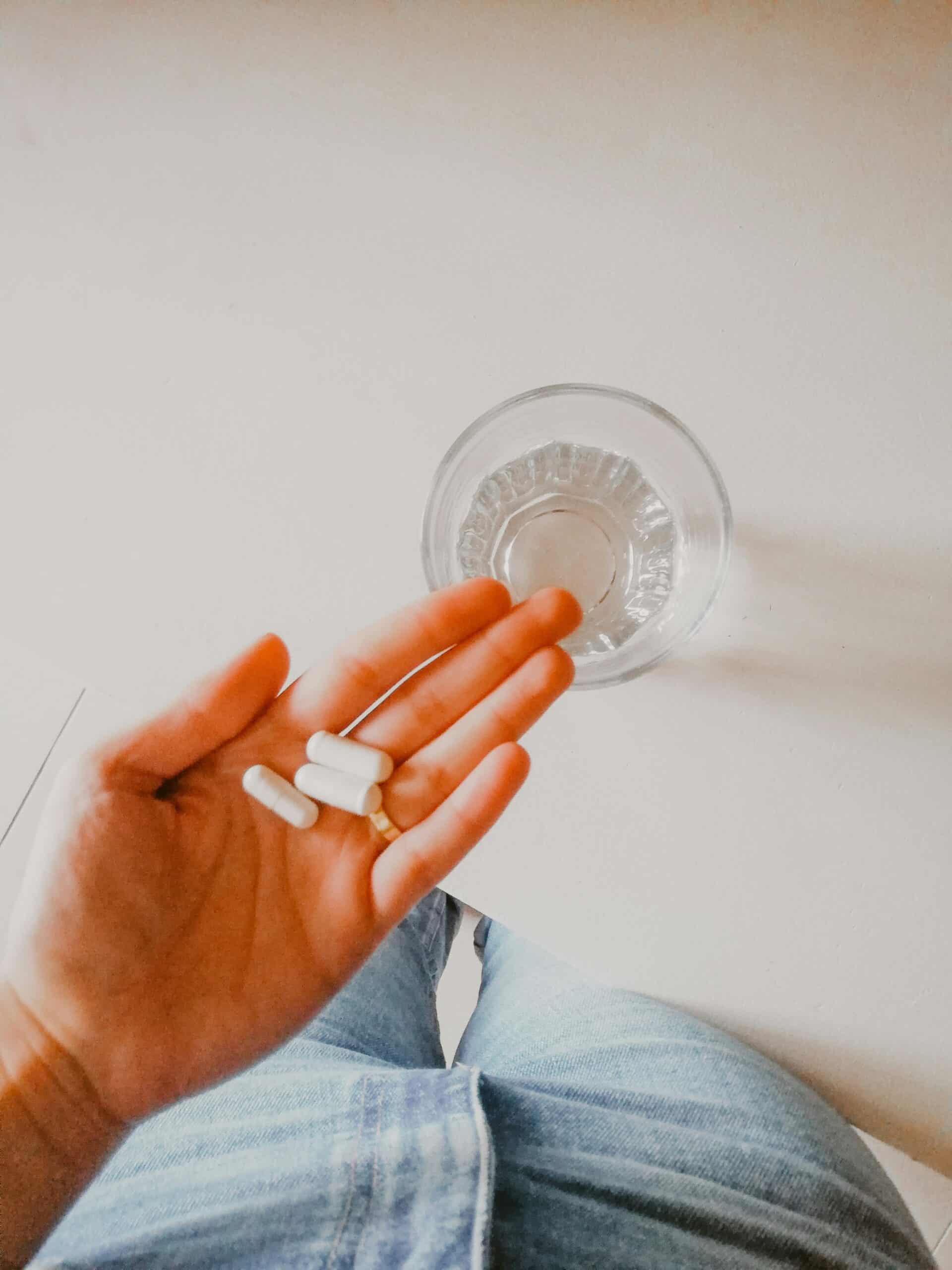Bloating is one of the most frustrating and misunderstood symptoms experienced by individuals with endometriosis. Unlike occasional digestive discomfort, this type of bloating is often persistent, painful, and deeply connected to the body’s inflammatory and hormonal changes. From swollen abdomens to digestive irregularities, bloating can significantly impact daily comfort and quality of life. This blog explores the connection between endometriosis and bloating, uncovering its causes, symptoms, and effective ways to manage it through medical treatment, lifestyle changes, and gut-friendly strategies.
Key Takeaways
- Bloating in endometriosis is linked to inflammation, adhesions, and gut dysbiosis.
- Recognizing symptoms and causes can lead to effective medical and dietary interventions.
- Treatment includes hormonal therapies, surgery when needed, and lifestyle modifications to support gut health.
- Personalized strategies using diet, supplements, and stress management help improve quality of life.
What Is the Connection Between Bloating and Endometriosis?

Bloating is a common symptom in endometriosis due to multiple factors. Abnormal scar tissue (adhesions) causes organs to stick together, producing fullness and discomfort. Endometrial-like tissue outside the uterus leads to inflammation that increases swelling, fluid retention, and modifies nerve responses, all of which can affect gastrointestinal function. In addition, endometriosis may involve the sigmoid colon and small intestine, disrupting digestion and defecation. Inflammatory markers and shifts in gut bacteria support this connection and explain the chronic nature of bloating.
Adhesions and Organ Compression
Adhesions form when scar tissue causes organs to stick together, limiting their movement and pressing against the intestines. This physical restriction creates a sense of tightness and fullness, often mistaken for general bloating. Over time, these adhesions can worsen gastrointestinal motility and contribute to irregular bowel habits. The resulting distension can become more pronounced during hormonal fluctuations. Managing these tissue changes is key to reducing daily discomfort. Gentle stretching, therapeutic movement, and targeted treatments may offer some relief. Addressing adhesion formation early may prevent more serious complications. When needed, minimally invasive procedures can also help resolve organ entrapment.
Hormonal Influence on Digestion
Fluctuating hormones influence digestion and water retention, both of which contribute to bloating. Estrogen and progesterone shifts can alter gut motility, leading to gas buildup or constipation. In endometriosis, hormonal cycles also fuel the growth of ectopic tissue, increasing inflammation throughout the abdomen. These combined effects slow down digestion and create pressure sensations in the lower abdomen. Even minor hormonal changes may produce noticeable effects in sensitive individuals. Tracking symptoms against the menstrual cycle can reveal patterns. Therapies that stabilize hormone levels often improve digestion. Balancing hormones can help break the cycle of inflammation and bloating.
Inflammatory Response and Gas Production
Endometriosis activates an immune response that causes inflammation and fluid buildup in the pelvic region. This inflammation not only irritates tissue but also disrupts normal digestion by affecting nerve signaling. A common outcome is excessive gas production and abdominal swelling. Inflammatory substances may even alter how the gut processes food. Bloating worsens as intestinal function slows, trapping air and stool. Reducing inflammation directly can ease digestive strain. Anti-inflammatory interventions are often part of holistic treatment plans. Supporting gut health with nutrient-dense foods helps calm systemic responses.
What Are the Common Symptoms of Bloating Related to Endometriosis?

Bloating in endometriosis presents with unique characteristics that differentiate it from general digestive bloating. These symptoms tend to be persistent, cyclical, and often accompanied by other signs of pelvic discomfort. Identifying these patterns is key to early intervention. Recognizing bloating as part of a larger symptom picture can guide more effective treatment strategies. Early awareness also supports better daily management.
Visible Swelling and Fullness
Many individuals report visible abdominal swelling that feels tight and uncomfortable. This can occur even after small meals or at rest. The bloating is often described as a “ballooning” sensation that doesn’t resolve with typical remedies like gas relief tablets. This swelling can make clothing feel tighter, impacting physical comfort and confidence. Symptoms may fluctuate throughout the day but tend to worsen before menstruation. The bloating is deeper and more sustained than dietary-related distension. Identifying this unique pattern can help distinguish endometriosis from common gut issues. Addressing the root causes leads to more lasting relief.
Gastrointestinal Distress
Digestive irregularities often accompany bloating, including constipation, diarrhea, or alternating patterns of both. These symptoms are typically ongoing rather than occasional. Bowel movements may feel incomplete or strained, especially during menstrual cycles. Gas buildup can cause sharp cramping or pressure in the lower abdomen. These signs suggest deeper involvement of intestinal structures. Simple dietary adjustments often aren’t enough to resolve the issue. When gut function is compromised by inflammation or adhesions, professional intervention becomes essential. Clear communication with healthcare providers can clarify what’s normal and what signals a larger issue.
Menstrual-Linked Symptoms
Many patients notice that bloating and related discomfort spike during menstruation. Hormonal changes during this time intensify inflammation and fluid retention. The abdomen may appear more distended, with added back pain or pelvic heaviness. These symptoms can make daily tasks difficult and lower overall energy. Tracking symptoms alongside menstrual cycles helps confirm the pattern. This association reinforces the role of hormone regulation in treatment. Recognizing menstrual-related symptom peaks helps guide the timing of dietary and medical interventions. Personalized management improves physical comfort and predictability.
Which Medical Treatments Help Reduce Bloating in Endometriosis?

A range of medical options is available to help relieve bloating caused by endometriosis. These treatments aim to reduce inflammation, manage hormonal fluctuations, and correct anatomical disruptions. Medical plans are often tailored to the severity and source of symptoms. Combination therapy tends to yield the best outcomes. Each approach plays a role in restoring comfort and function.
Hormonal Regulation
Hormonal therapy is a first-line strategy to reduce symptoms related to endometriosis. Options like oral contraceptives and hormone modulators help control tissue growth outside the uterus. By stabilizing estrogen levels, inflammation and swelling are reduced. This also minimizes bloating caused by fluid retention and disrupted digestion. These therapies can be delivered in pills, injections, or intrauterine devices. Consistent hormone control supports symptom stability across cycles. While effective, it’s important to monitor for side effects. A tailored hormonal plan ensures long-term success with minimal disruption.
Anti-Inflammatory Medications
Nonsteroidal anti-inflammatory drugs (NSAIDs) are commonly used to reduce pain and swelling. These medications block inflammatory chemicals that irritate tissue and nerves. When used correctly, they offer temporary relief from bloating and pelvic pressure. NSAIDs can be helpful around menstruation when symptoms are most intense. They’re often combined with other treatments for a comprehensive plan. These medications should be taken under guidance to avoid side effects. While not a cure, they offer essential symptom management during flares. Their accessibility makes them a practical option for many.
Surgical Intervention
Laparoscopic surgery is an option when conservative treatments fail to relieve bloating. This procedure removes endometrial implants and adhesions, improving organ mobility. Restoring proper anatomy can relieve pressure on the intestines and bladder. Many patients notice immediate improvements in bloating and bowel function. Surgery also allows for diagnosis confirmation and tissue evaluation. While effective, recovery requires planning and post-op support. Combining surgery with ongoing medical care helps maintain long-term relief. The decision for surgery is based on severity, recurrence, and impact on daily life.
What Dietary Strategies Can Help Manage Bloating in Endometriosis?

Diet significantly influences how the body responds to inflammation and digestive challenges. Making mindful food choices can minimize triggers and support gut healing. Women with endometriosis often experience improvement when adopting targeted nutritional approaches. Personalized meal planning based on individual sensitivities is ideal. Long-term consistency tends to yield the best results.
Anti-Inflammatory Food Choices
Choosing foods that reduce inflammation helps ease abdominal discomfort and bloating. These include leafy greens, berries, oily fish, and olive oil. Such ingredients help modulate the body’s immune responses and reduce swelling. Avoiding processed foods and sugars is equally important to avoid triggering flare-ups. Meals built on whole, natural ingredients support better digestive flow. Anti-inflammatory diets can also ease fatigue and hormonal swings. Creating balanced, nutrient-rich plates reduces the burden on the digestive system. Over time, the gut becomes more resilient to stress.
Low-FODMAP Eating Patterns
A low-FODMAP diet limits fermentable carbs that contribute to gas and bloating. These carbohydrates are found in foods like garlic, onions, legumes, and wheat. Reducing their intake can lessen symptoms caused by gut sensitivity or imbalance. Many people find relief within a few weeks of modifying their diet. Reintroducing foods one at a time helps identify specific triggers. This approach is best done under guidance for safety and effectiveness. Low-FODMAP plans offer structure without compromising nutritional value. When personalized, they support both digestion and energy.
Common Food Triggers to Avoid
Certain foods frequently cause bloating for those with endometriosis. Dairy, gluten, caffeine, and artificial sweeteners can all irritate the digestive system. These ingredients may exacerbate inflammation or interfere with gut motility. Keeping a symptom journal helps identify and avoid individual triggers. Gradual elimination and careful monitoring can guide smarter food choices. Avoiding trigger foods can significantly reduce the intensity of bloating episodes. Finding satisfying substitutes ensures dietary changes feel sustainable. Long-term avoidance supports gut recovery and symptom control.
Which Supplements and Herbal Remedies Are Effective for Bloating and Endometriosis?

Supplements and herbs can provide additional support alongside medical treatment and diet. These natural options may soothe inflammation, calm digestion, and restore gut balance. The right combination depends on individual needs and health status. It’s best to consult a healthcare provider for guidance. Quality and dosing matter for safety and results.
Probiotics and Prebiotics
Probiotics add beneficial bacteria to the gut, while prebiotics feed those bacteria. Together, they help restore microbial balance, improve digestion, and lower inflammation. These changes can significantly reduce gas and bloating. Consistent use over time builds stronger gut resilience. Probiotic strains like Lactobacillus and Bifidobacterium are commonly used for digestive support. Prebiotics come from plant fibers in foods like bananas, oats, and garlic. Incorporating both creates a healthier gut environment. This balance improves nutrient absorption and overall comfort.
Herbal Soothers for Digestion
Herbs such as peppermint, chamomile, and ginger can help ease digestive discomfort. These plants have calming, anti-inflammatory, and antispasmodic properties. They can reduce cramping, ease nausea, and promote smoother bowel movements. Herbal teas or supplements are easy ways to include them in a daily routine. These remedies work well as part of a broader symptom management plan. They provide gentle relief without harsh side effects. However, proper dosing and timing are essential. Working with a provider ensures safe, effective use.
Anti-Inflammatory Nutrients
Certain nutrients support immune regulation and gut healing. Omega-3 fatty acids, found in fish oil, help reduce systemic inflammation. Curcumin, the active compound in turmeric, also has potent anti-inflammatory effects. These supplements can relieve bloating and abdominal tenderness. They are most effective when used consistently alongside a balanced diet. It’s important to choose high-quality, well-absorbed formulas. These nutrients may take time to build up in the body, but their effects are lasting. Adding them to a daily routine enhances long-term health outcomes.
How Can Lifestyle Modifications Alleviate Bloating and Endometriosis Symptoms?

Daily habits influence how the body responds to stress, digestion, and inflammation. Small changes in movement, sleep, and stress management can make a big difference. Creating a routine that supports the nervous and digestive systems is key. These strategies are easy to implement and cost-effective. Over time, they offer meaningful relief.
Gentle Movement and Exercise
Regular movement supports blood flow and digestive health. Activities like walking, stretching, or swimming help reduce stagnation and promote gut motility. Exercise also aids in lymphatic drainage, which decreases bloating. Gentle routines are best for those experiencing fatigue or pain. Movement lowers stress hormones, which in turn calms inflammation. Finding enjoyable activities encourages consistency. Even short, daily sessions can produce long-term benefits. Physical activity should feel supportive, not exhausting.
Mind-Body Stress Reduction
Stress is a known trigger for digestive symptoms and hormonal imbalance. Techniques like deep breathing, yoga, and guided meditation help lower cortisol levels. This reduction decreases systemic inflammation and eases gut sensitivity. Mindfulness practices also improve emotional regulation and sleep quality. Creating a calming environment enhances these benefits. Practicing regularly builds resilience and symptom awareness. These tools are easy to adapt and personalize. Over time, they become integral to symptom control.
Sleep and Daily Rhythm
Restorative sleep supports hormone balance and immune function. Establishing a regular bedtime and morning routine helps regulate internal rhythms. Poor sleep increases inflammation and worsens bloating. Winding down with calming activities promotes better rest. Avoiding heavy meals and screens before bed improves sleep quality. Even small improvements in sleep hygiene can make a difference. Prioritizing rest is essential for managing endometriosis. A consistent sleep schedule strengthens overall recovery.
Frequently Asked Questions:
Why does endometriosis cause bloating even when I haven’t eaten much?
Endometriosis can trigger bloating due to inflammation, fluid retention, and adhesions that restrict organ movement. Even without eating large meals, these internal disruptions create pressure and gas buildup in the abdomen. Hormonal fluctuations also affect digestion, making the bloating feel more intense during certain times of the menstrual cycle.
Can dietary changes alone manage bloating caused by endometriosis?
Dietary changes play a big role in reducing bloating but are most effective when paired with medical or lifestyle support. Eating anti-inflammatory foods, avoiding common triggers, and following structured plans like low-FODMAP can ease digestive stress. However, deeper issues like adhesions or hormonal imbalances may require additional treatment.
Are probiotics and herbal teas safe to use for endometriosis-related bloating?
Yes, probiotics and herbal teas like peppermint, ginger, and chamomile are generally safe and can offer digestive relief. They help support gut health and reduce cramping or inflammation. Still, it’s best to consult a healthcare provider to ensure the right strains or herbs are chosen and to prevent interactions with other treatments.
How does exercise help reduce bloating in endometriosis?
Gentle exercise helps stimulate digestion, reduce inflammation, and promote circulation. It encourages bowel movement and lymphatic drainage, both of which help ease abdominal pressure. Regular activity also helps manage stress, which can otherwise worsen gut symptoms. Even light movement like stretching or walking makes a difference over time.
When should I consider surgery for bloating caused by endometriosis?
Surgery may be considered if bloating and other symptoms remain severe despite using medications, diet changes, or lifestyle adjustments. Laparoscopic procedures can remove endometrial tissue and adhesions that restrict bowel or organ movement. This option is usually recommended after less invasive treatments have been tried or if gastrointestinal function is significantly impaired.
Conclusion
Endometriosis involves complex interactions between inflammation, adhesion formation, and gut health, all of which contribute to bloating. Effective management requires a multifaceted approach that includes medical treatments, dietary modifications, lifestyle changes, and supportive supplements. By understanding these mechanisms and working closely with healthcare providers, patients can create personalized strategies to relieve bloating and improve quality of life. This holistic approach not only targets the physical symptoms but also supports overall well-being for long-term disease management.

